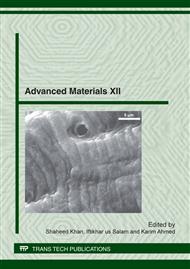p.348
p.356
p.364
p.371
p.378
p.386
p.394
p.399
p.406
Software Development for Specific Geometry and Safe Design of Isotropic Material Multicell Beams
Abstract:
Comparison of analytical results with finite element results for analysis of isotropic material multicell beams subjected to free torsion case is the main idea of this paper. Progress in the fundamentals and applications of advanced materials and their processing technologies involves costly experiments and prototype testing for reliability. The software development for design analysis of structures with advanced materials is a low cost but challenging research. Multicell beams have important industrial applications in the aerospace and automotive sectors. This paper explains software development to test different materials in design of a multicell beam. Objective of this paper is to compute the torsional loading of multicell beams of isotropic materials for safe design in both symmetrical and asymmetrical geometries. Software has been developed in Microsoft Visual Basic. Distribution of Saint Venant shear flows, shear stresses, factors of safety, volume, mass, weight, twist, polar moment of inertia and aspect ratio for free torsion in multicell beam have been calculated using this software. The software works on four algorithms, these are, Specific geometry algorithm, material selection algorithm, factor of safety algorithm and global algorithm. User can specify new materials analytically, or choose a pre-defined material from the list, which includes, plain carbon steels, low alloy steels, stainless steels, cast irons, aluminum alloys, copper alloys, magnesium alloys, titanium alloys, precious metals and refractory metals. Although this software is restricted to multicell beam comprising of three cells, however future versions can have ability to address more complicated shapes and cases of multicell beams. Software also describes nomenclature and mathematical formulas applied to help user understand the theoretical background. User can specify geometry of multicell beam for three rectangular cells. Software computes shear flows, shear stresses, safety factors etc in all members of three cell beam, analyzes safety of proposed design and provides output with highlighted comments and graphics, in cases where safety factor in any element of multicell beam falls below 1.5. Results of this software were compared and verified with analytical calculations and Microsoft Excel spreadsheet. Development and use of this software provides an easy to use tool, for quick verification of different design cases in three cell beams composed of advanced isotropic materials. Furthermore, the methodology proposed is also useful for similar cases of research in reliable design studies and material analysis.
Info:
Periodical:
Pages:
378-385
Citation:
Online since:
May 2012
Authors:
Price:
Сopyright:
© 2012 Trans Tech Publications Ltd. All Rights Reserved
Share:
Citation:


